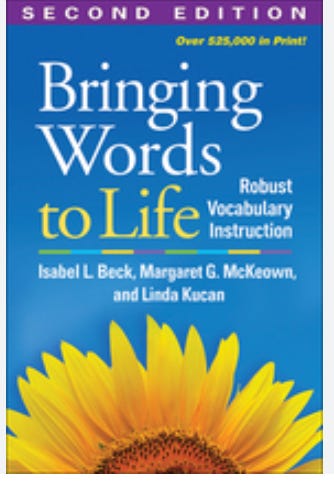In observing classes, I sometimes see students overwhelmed by the task of learning too many vocabulary words at once.
For older Multilingual Learners (MLs) who already know how to recognize words (like sounding them out, recognizing them quickly, and knowing their meanings), the next step is to focus on understanding language better.
The first step in effective vocabulary teaching is choosing a small list of the most important words (about seven to eight) that can be used in different situations (see "Bringing Words to Life: Robust Vocabulary Instruction" by Beck, McKeown, and Kucan).
I used the book “House on Mango Street” with my ninth-grade MLs when I taught in the border towns of Douglas, Arizona, and Agua Prieta, Sonora, Mexico.
The word cumulus appears in the vignette "And Some More," where Esperanza and her friends talk about different types of clouds. Cumulus refers to a type of large, white, and fluffy cloud often seen on sunny days. It's a more scientific term that young readers might not be familiar with, so it can be challenging for them to understand without some explanation or context. So, it’s good to incorporate experiences for them to see and use it in different contexts.
After picking these important keywords, the next step is to create fun and engaging ways for students to practice using them.
An easy, no-prep way to practice is the memory or concentration game. This is a great vocabulary activity when you want students to be active and engaged.
Put students in pairs or small groups of 3-4. Any more than that doesn’t allow enough practice.
Assign students to write each of the 7-8 vocabulary words on a 3×5 card (or half a card) and each definition or picture on another card. Make sure the index cards are blank on the back. In pairs, they’ll each create 4, or in 3s, they’ll have 2 or 3, etc.
Put students in pairs or small groups of 3-4. Any m
ore than that doesn’t allow enough practice.
Shuffle the index cards and spread them face down on a table in rows.
Players take turns flipping over two cards at a time.
If the cards match, the player keeps them.
If the cards don't match, the player flips them back over and the next player takes a turn.
The game ends when all the cards have been matched.
The player with the most pairs wins.
Have you tried this?
How many vocabulary words do you introduce?
Any games that are successful?
Please press the “heart” or “like” button, if this is useful.













I love this game! It's simple and you can introduce many different variations. Thank you for sharing. I have used a similar game with my students, but I've also expressed the importance of reading the words and their match aloud to others for oral reading practice.